Did you know there are three bioluminescent bays in Puerto Rico – and you can visit all of them?
At first consideration that might not seem that impressive, but there are only five in the world, so it’s actually quite phenomenal!
If you’re looking for something unique to do when visiting, definitely add visiting Puerto Rico’s bio bays to your bucket list.
In this post, I’ll tell you about each bay, plus tips on when to go, as well as which tours to go with if you don’t want to go it alone.
An introduction to bioluminescent bays
Let’s back up a bit. Considering there are only five bioluminescent bays in the world, you might not know what I’m even talking about!
In a nutshell, bioluminescent bays are bodies of water that glow in the dark.
The glow occurs when there is an overabundance of microscopic organisms called dinoflagellate that casts a stunning blue green light or blue white glow when disturbed.
Bays like the ones in Puerto Rico are perfect breeding grounds for dinoflagellates because they are enclosed and filled with nutrients from mangrove trees.
The slightest change in the environment can cause the dinoflagellate to disperse, taking its glittery glow with it.
This is why you can sometimes witness bioluminescence in other bodies of water – but typically for only short periods of time.
La Parguera
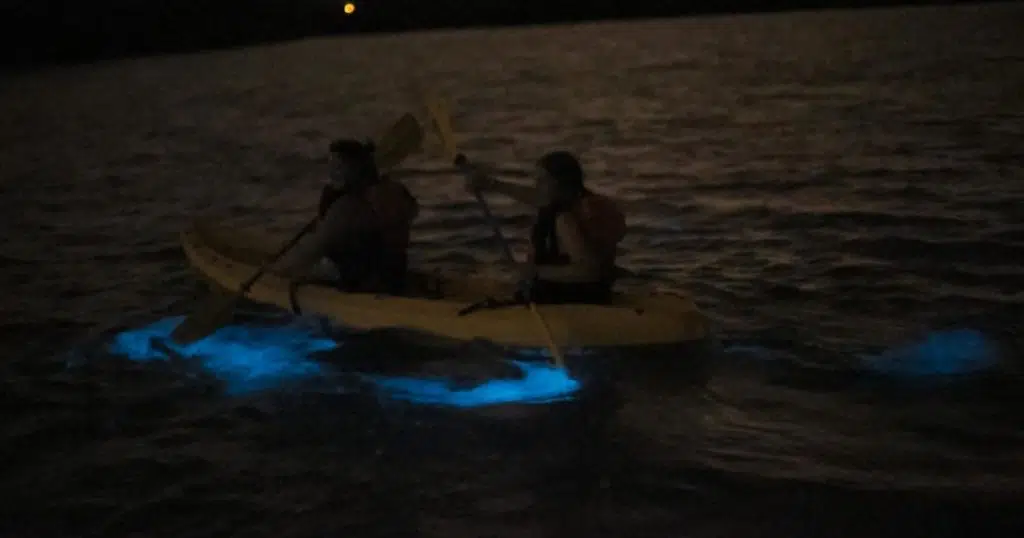
Located in Lajas, about 2 hours southwest from San Juan, is La Parguera Bio Bay.
Lajas is a super tiny coastal town with tons of other cool activities, like snorkeling and paddleboarding. So if you’re looking for something quiet or off the beaten path, this is the place.
Upping the cool factor at La Parguera is that it is the only bioluminescent bay in Puerto Rico where swimming is allowed in the glowing water.
Laguna Grande
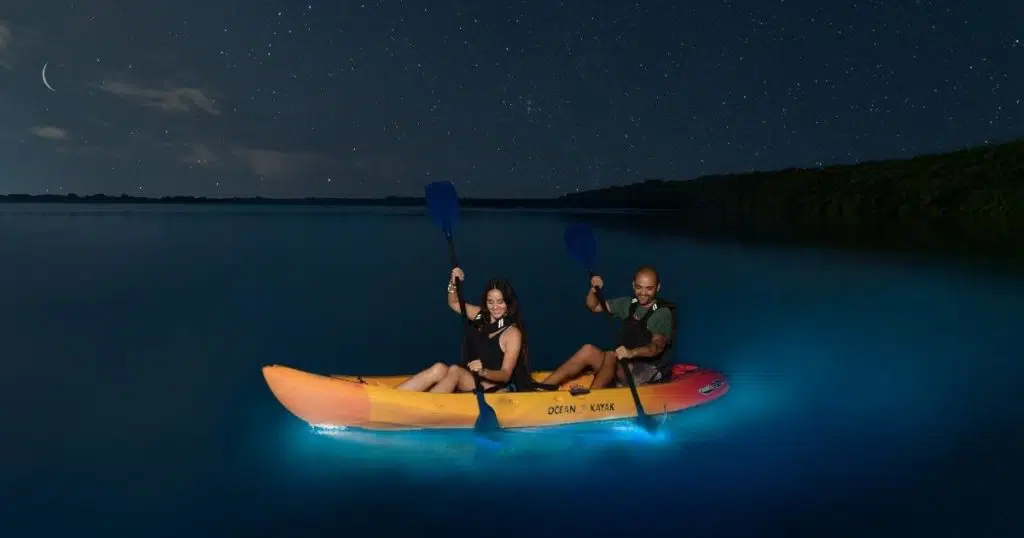
Next is Laguna Grande in Fajardo, located about 40 miles east of San Juan, the capital of Puerto Rico.
Fajardo is a great place to base yourself for exploring Laguna Grande, as well as El Yunque National Forest.
There are also several lovely beaches nearby for water sports and relaxing under the sun during the day.
Swimming is not allowed at Laguna Grande, but you can embark on kayaking or boat tours to experience its magical glow.
Mosquito Bay, Vieques
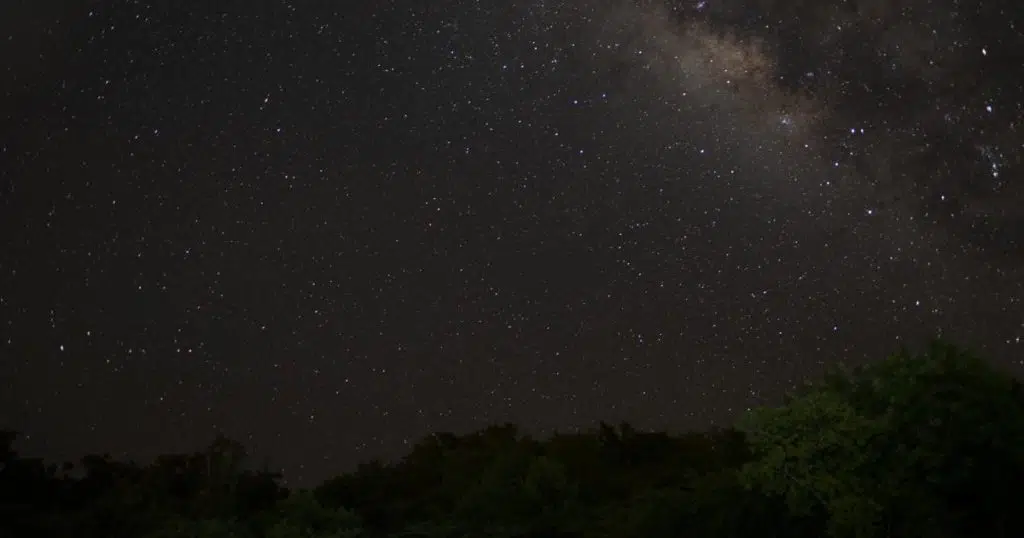
Last on the list is Mosquito Bay on the Southern shore of the island of Vieques. Vieques itself is located off the eastern side of Puerto Rico’s main island.
Mosquito Bay is the brightest bio bay in the world with up to 700,000 dinoflagellates per gallon of water, creating its shimmery blue glow.
In fact, in 2006 it was recognized by Guinness World Records as the Brightest Bioluminescent Bay in the World (source).
After Hurricane Maria hit the islands of Puerto Rico in 2017, it destroyed a lot of mangroves, which nearly destroyed Mosquito Bay’s glow. However, less than a year later, it was back and continues to strengthen.
Considering it’s on a different island, getting to Mosquito Bay isn’t as easy as Laguna Grande or La Parguera.
That said, you can get to Vieques via plane or ferry. The plane takes about 10 minutes, but will cost you more. The ferry takes about 30 minutes and is only a few dollars.
NOTE: You cannot take your rental car with you on the ferry, so be sure to budget for separate rental or other transportation while on Vieques.
Mosquito Bay is highly protected and can only be accessed via kayaking tours with licensed tour guides. In a nutshell, a tour is required to experience this phenomenon first hand.
Tips for visiting bioluminescent bays in Puerto Rico
There are a few things to consider before booking your trip that will increase your chances of a phenomenal visit.
First, schedule your visit during Puerto Rico’s dry season, which is roughly December through March. I don’t know about you, but that definitely makes Puerto Rico perfect for a warm getaway in the winter!
Second, book your trip when there will be a new moon phase so that the moon is not visible and therefore not casting a bright white light across the water.
This will also increase the darkness at night and eliminate most light pollution, which will enhance your experience.
Lastly, wait to book your tour until you have a good idea of what the weather will be like.
Avoid rainy days or visiting too soon after a heavy rainfall. Both can disrupt the bay’s brightness, causing the blue green light to hide, or result in a less than stellar visit.
Up next, check out more of my favorite travel tips for Puerto Rico and beyond:
About the author

Meg Frost is a Boston-based travel blogger that helps people embrace technology to make vacation planning and traveling wicked easy, affordable, and fun.
She holds an M.A. in Journalism from Northeastern University and B.S. in Communication & American Studies from University of Miami.

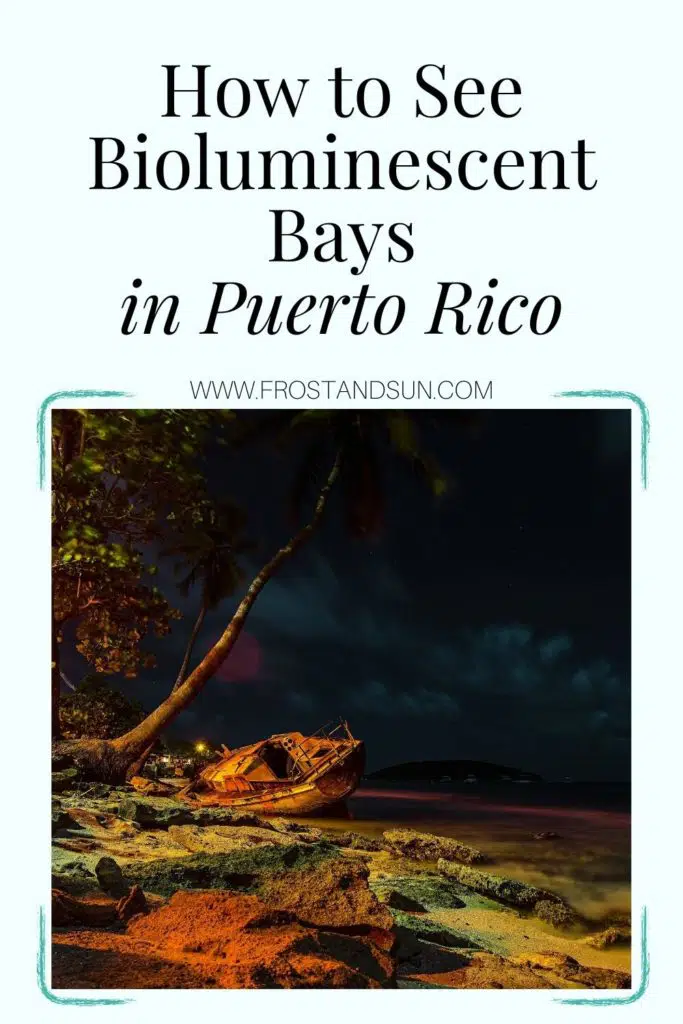
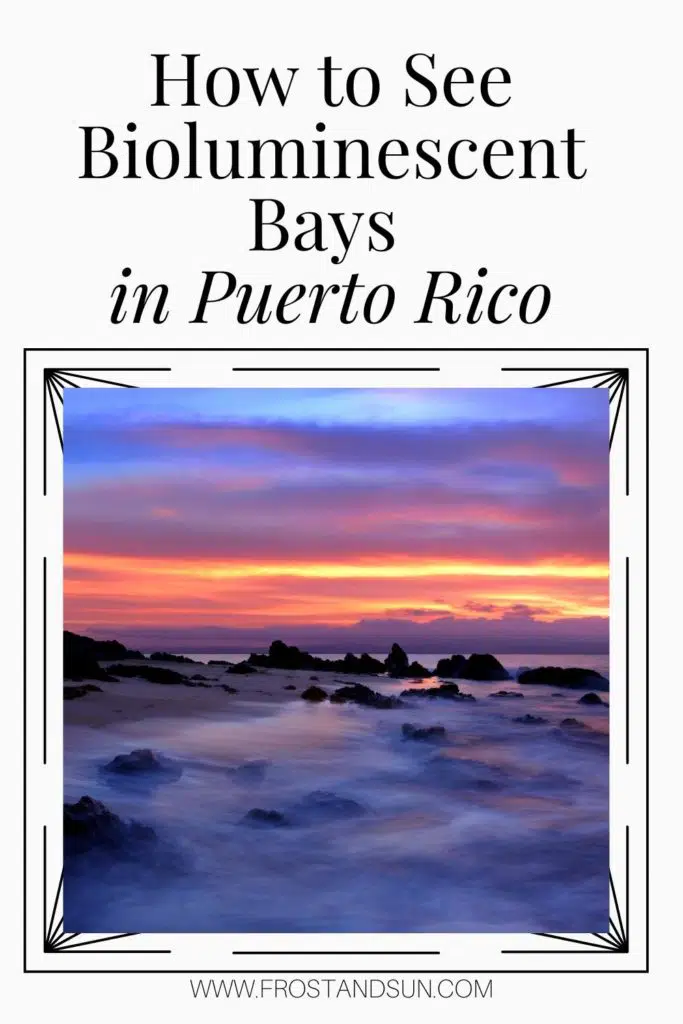
10 Essential Puerto Rico Travel Tips - Frost + Sun
Saturday 30th of April 2022
[…] to book your trip? Check out my post about the bioluminescent bays in Puerto Rico […]